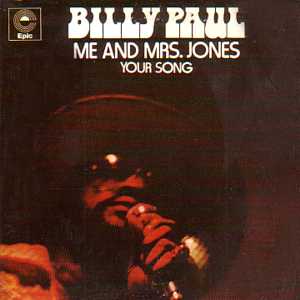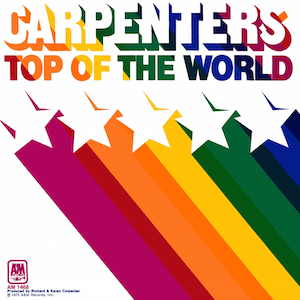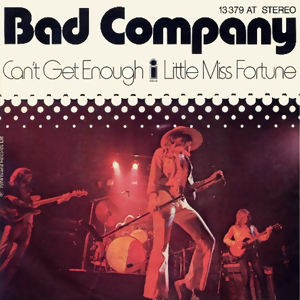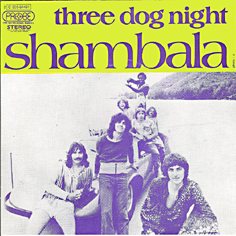
"American Tune" is a song by the American singer-songwriter Paul Simon. It was the third single from his third studio album, There Goes Rhymin' Simon (1973), released on Columbia Records. The song, a meditation on the American experience, is based on the melody of the hymn "O Sacred Head, Now Wounded" and bears a striking resemblance to JS Bach’s “Erkenne mich, mein Hüter“. The song reached number 35 on the Billboard Hot 100.

There Goes Rhymin' Simon is the third solo studio album by American musician Paul Simon released in May 1973. It contains songs spanning several styles and genres, such as gospel and Dixieland. It received two nominations at the Grammy Awards of 1974, which were for Best Pop Vocal Performance, Male and Album of the Year.

"Me and Mrs. Jones" is a 1972 soul song written by Kenny Gamble, Leon Huff, and Cary Gilbert, and originally recorded by Billy Paul. It describes an extramarital affair between a man and his lover, Mrs. Jones. In the song, the two meet in secret "every day at the same cafe", at 6:30, where they hold hands and talk. The two are caught in a quandary: "We got a thing going on/we both know that it's wrong/but it's much too strong/to let it go now."

"Mother and Child Reunion" is a song by the American singer-songwriter Paul Simon. It was the lead single from his second studio album, Paul Simon (1972), released on Columbia Records. The song reached No. 4 on the Billboard Hot 100 chart in March 1972.

"Top of the World" is a 1972 song written and composed by Richard Carpenter and John Bettis and first recorded by American pop duo Carpenters. It was a Billboard Hot 100 No. 1 hit for the duo for two consecutive weeks in 1973.

"Magic" is a 1974 song by Scottish pop rock band Pilot, and was the first hit single for the group. It was written by band members David Paton and Billy Lyall for their debut album, From the Album of the Same Name.

"Until You Come Back to Me (That's What I'm Gonna Do)" is a song written by Morris Broadnax, Clarence Paul, and Stevie Wonder. The song was originally recorded by Stevie Wonder in 1967, but his version was not released as a single and did not appear on an album until 1977's anthology Looking Back. The best-known version of this song is the 1973 release by Aretha Franklin, who had a million-selling top 10 hit on Billboard charts. The song reached No. 1 on the R&B chart and No. 3 on the Hot 100 chart in 1974. It became an RIAA Gold record.

"Can't Get Enough" is the debut single by English rock supergroup Bad Company. Appearing on the band's 1974 self-titled debut album, it is their biggest hit and is considered their most popular song. It reached No. 5 on the Billboard Hot 100 singles chart and No. 1 on Cashbox magazine's Top 100 Singles chart. The song is also frequently played on classic rock radio stations.

"Signs" is a song by the Canadian rock group Five Man Electrical Band. It was written by the band's frontman, Les Emmerson, and popularized the relatively unknown band, who recorded it for their true first album, Good-byes and Butterflies, in 1970. The LP "Five Man Electrical Band" had begun as a Staccatos album with Brian Rading, the band's bassist suggesting the band's new name from the song title.

"Love Train" is a hit single by the O'Jays, written by Kenny Gamble and Leon Huff. Released in 1972, it reached No. 1 on both the R&B Singles and the Billboard Hot 100 in February and March 1973 respectively, and No. 9 on the UK Singles Chart and was certified gold by the RIAA. It was the O'Jays' first and only number one record on the US pop chart. The song has been considered one of the first songs of disco music.

"Shambala" is a song written by Daniel Moore and made famous by two near-simultaneous releases in 1973: the better-known but slightly later recording by Three Dog Night, which reached No. 3 on the Billboard Hot 100, and a version by B. W. Stevenson. Its title derives from a mythical place-name also spelled Shamballa or Shambhala.

"Loves Me Like a Rock" is a song by the American singer-songwriter Paul Simon. It was the second single from his third studio album, There Goes Rhymin' Simon (1973), released on Columbia Records. It features background vocals from the Dixie Hummingbirds, a Southern black gospel group. Although the lyrics are not typically associated with gospel music, the Dixie Hummingbirds were eager to record the song with Simon, and they recorded their own version soon after for their 1973 album We Love You Like a Rock/Every Day and Every Hour.

"I Just Want to Be Your Everything" is a song recorded by Andy Gibb, initially released in April 1977 as the first single from his debut album Flowing Rivers. It reached number 1 on the Billboard Hot 100 for three weeks, starting on the week ending 30 July 1977, and again for the week ending 17 September 1977. It was Gibb's first single released in the United Kingdom and United States. His previous single, "Words and Music" was only released in Australia. It is ranked number 26 on Billboard's 55th anniversary All Time Top 100.

"Rock On" is a song written by English singer David Essex. Recorded in 1973 and released as a single by Essex, it became an international hit. In 1989, American actor and singer Michael Damian recorded a cover version that went to number one on the Billboard Hot 100 chart. The song has been recorded many times, including a 2006 version by the English hard rock group Def Leppard.

Paul Simon is an American singer-songwriter who is possibly best known as a member of the folk-duo Simon & Garfunkel with Art Garfunkel. He has released studio albums, live albums, compilation albums and singles. His music career has spanned over 60 years. He started recording music in the 1950s and his most recent album, Seven Psalms, was released on May 19, 2023.

"Late in the Evening" is a song by American singer-songwriter Paul Simon. It was the lead single from his fifth studio album, One-Trick Pony (1980), released on Warner Bros. Records.

"The Things We Do for Love" is a song by British band 10cc, released as a single in 1976. It later featured on the album Deceptive Bends released in 1977 and was the group's first release after the departure of band members Kevin Godley and Lol Creme.

"Scorpio" is a song by Dennis Coffey and the Detroit Guitar Band. It charted at number 6 on the Billboard Hot 100.

"Take Me to the Mardi Gras" is a song by the American singer-songwriter Paul Simon. It was the fourth single from his third studio album, There Goes Rhymin' Simon (1973), released on Columbia Records.

"Nice to Be with You" is a 1972 song, from the album of the same name, by Gallery.




















